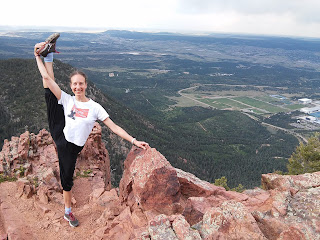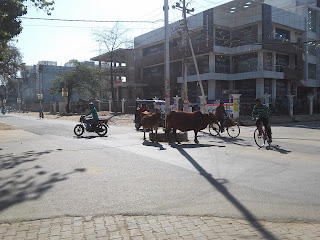Like the rest of the world, I am teaching online these days. While my first online teaching back in April was mostly just a repeat of the normal courses in an online format, I decided to completely restructure my course Data Analytics & Communication for the current quarter, to make it more amenable to online teaching. Thanks to a wonderful course by our Education Support and Innovation (shoutout to Tracy Poelzer!), it was actually much less intimidating than expected.
The first thing I did to transform the course to an online format was to divide it up into online folders corresponding to the course weeks, and within every week a series of steps. To make this insightful, I plotted all the steps into a jamboard. This allowed me to quickly keep track of the different components of my course. Every week starts with a short welcome video in which I explain the students what the week is about. I make these videos in loom, a very easy to use video recording program.
 |
| Sample screen shot from my course environment with the folders belonging to the weeks on the left bottom and some of the first steps in the centre. |
Because this covid time is very hard for everyone, I decided to provide my students with maximal flexibility by only having a single lecture every week. All the other lecture material consists of pre-recorded mini-lectures on loom. So every week I go through my original course lectures, extract the main topics, and make a 5-10 minute video on each topic (see for example this video on reproducibility versus replicability). I can reuse most of my slides because loom allows you to present the slides while you talk. I then link all these videos to Blackboard, which hosts the course. The added benefit of this is that loom records the number of views of each video, so I get a sense of how many students are following the lectures.
I have transformed the live lecture substantially to centre around student interaction. Again, I use the topics I identified from my original lectures to come up with classroom activities. These activities can include a poll. Typically I start the class off with a fun icebreaker poll, for example asking the students to pin a needle on a map indicating where they are listening in from. Another popular activity is putting students into breakout rooms of 4 or 5 and discussing a question or having a debate. I then ask about the outcomes of this debate using a fun website called Wheel of Names, in which I insert the group numbers to randomly choose a group to report. Another popular tool is to ask students to brainstorm together on a jamboard, for example, "what is your advice for producing good graphics?", which requires the students to mobilise all their knowledge from the lectures, the course readings and their own experience. A final fun lecture activity is to invite an expert on a topic (e.g., who has written a paper the students have read) and hold a kind of talkshow in which I as a lecturer moderate the discussion (in this case a good source of questions were the comments made by the students on the social reading platform Perusall that I use in my course).
A final change I made to the online course is to make the tutorials more explicitly social. Rather than them being just an education activity, I also invite students to come to the tutorials to have a chat with each other or with the teaching assistants. Rather than having the tutorials within the Blackboard environment, we moved them to gather.town, a fun online environment that kind of looks like an old computer game. In this environment, you only see and hear individuals when you are sufficiently close to them, kind of like in the real world. This would allow students to naturally work together on assignments, and walk up to the teaching assistant if they have questions. There are even some games to play in this environment created by my awesome colleague Martijn Wieling!
 |
| Screenshot from the gather.town environment |
Of course a big challenge is the final exam. When students do final exams online you have to assume that they have all information available and communicate with each other through the class WhatsApp. Consequently, I decided to make my exam, which usually involves knowledge questions about the material and interpretation of data analyses, to be about the actual analysis of real-life datasets. Different students get assigned different datasets and answer different questions about these datasets. Hopefully this will make the exam fair and also a good reflection of the students' knowledge and skills. And most importantly, prepare them well to do data analysis and interpretation in the real world.






























